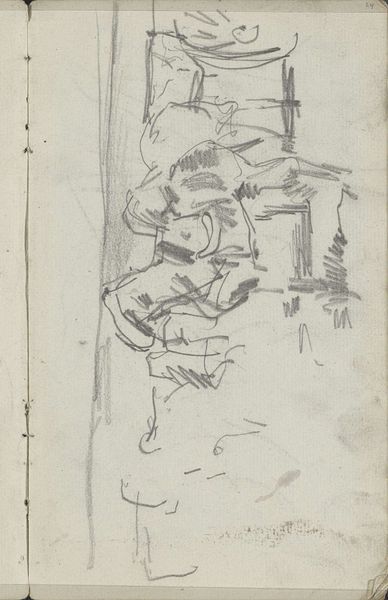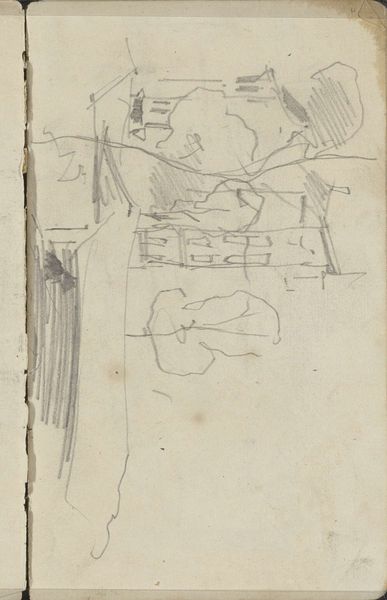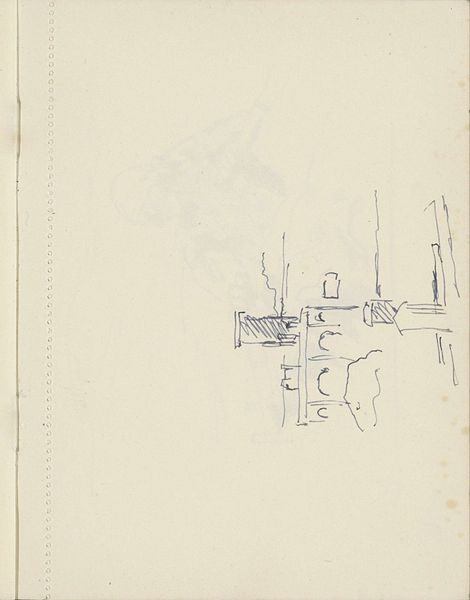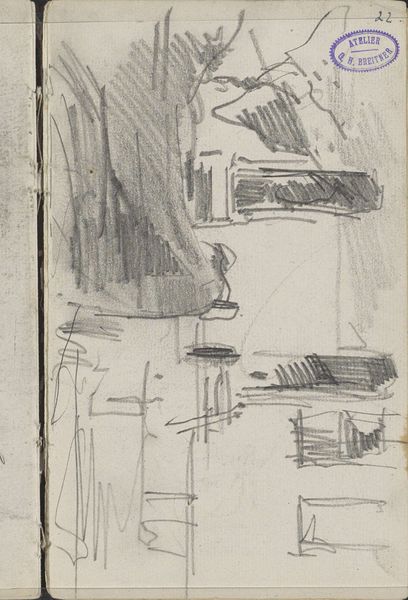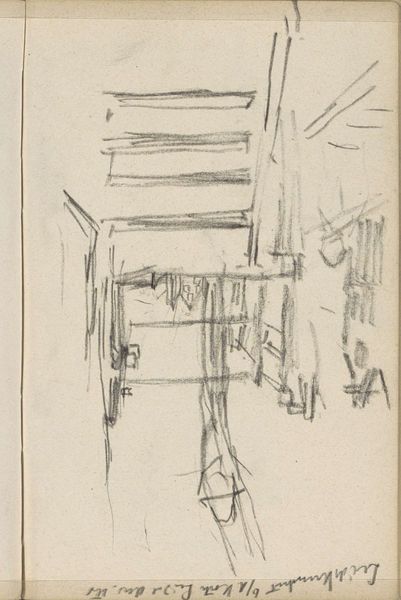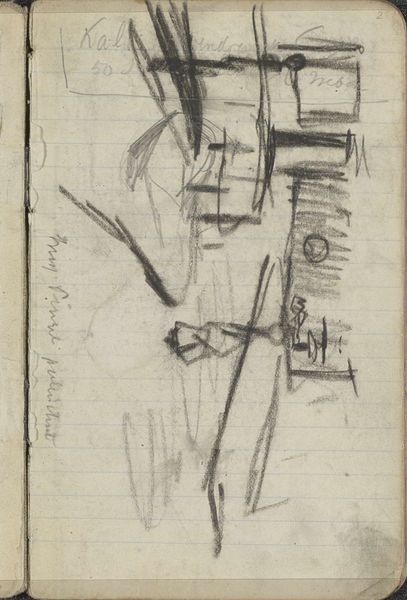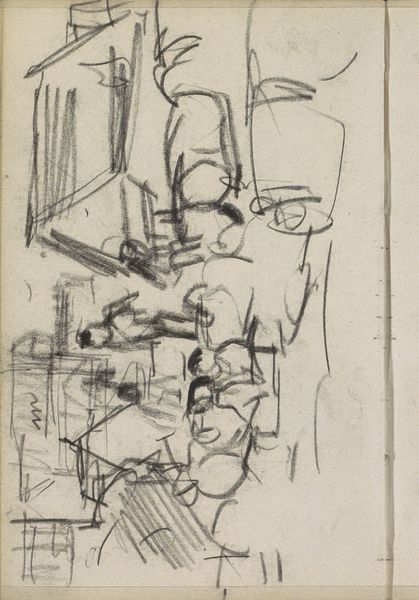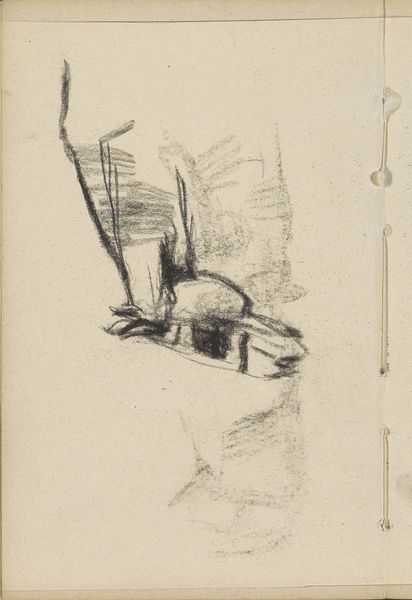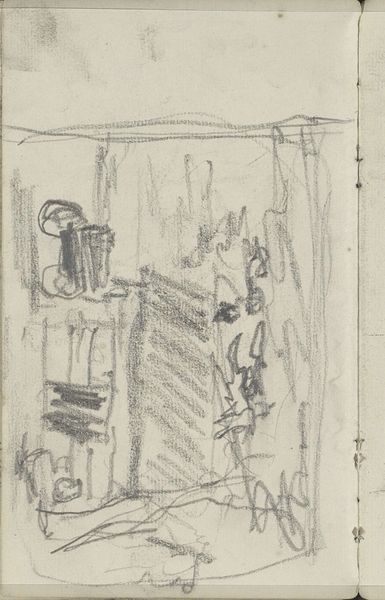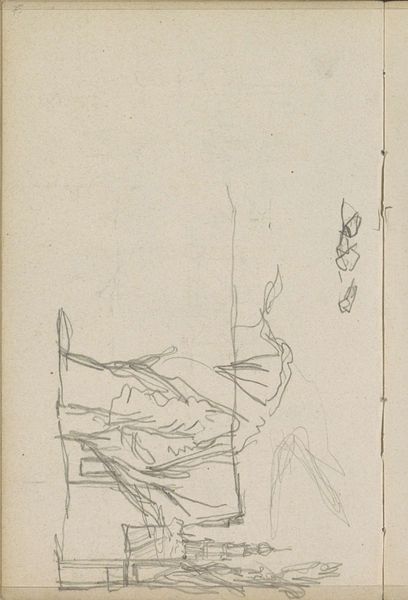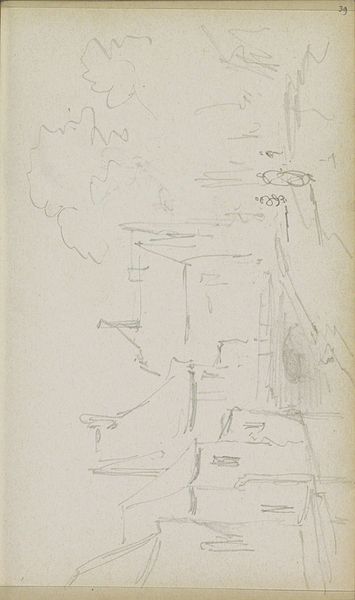
Copyright: Rijks Museum: Open Domain
Curator: Cornelis Vreedenburgh's drawing, "Huizen en figuren aan een kade," created sometime between 1890 and 1946, offers us a glimpse into a cityscape observed through delicate pencil strokes on paper. What’s your initial take? Editor: It’s so bare! There’s a starkness here, a feeling of incompleteness, yet it's captivating. The stark lines forming suggestions of buildings against so much negative space. Curator: The economical use of the pencil – look closely at the hatching that brings out the skeletal forms of buildings and fleeting impressions of figures—is intriguing. It is mounted at the Rijksmuseum. It seems almost industrial in its depiction. Vreedenburgh carefully selects a subdued aesthetic in a cityscape rendered in pencil. What does this reflect in societal consumption, do you think? Editor: Absolutely! The formal elements speak to that simplicity. Notice how the composition leads the eye diagonally, suggesting depth and distance even with so few marks. It's like a ghost of a place. What kind of place do you imagine it is? Curator: Given the era and the title, one can imagine this sketch originates from his work as a draughtsman from his social surroundings within the industrial landscape of The Netherlands at the turn of the century. He's probably making social commentary within a complex society— the work becomes less about architecture, more about social responsibility within a changing era of capitalism. Editor: The choice of such humble materials – pencil and paper – also directs the focus toward a commentary of production value itself; here, we see labor reduced to bare minimum expression, which reflects, materially and theoretically, an austerity reflected directly through formalism itself. A meta-commentary in pencil. I appreciate it, to say the least! Curator: Indeed! Vreedenburgh transforms seemingly modest resources into a powerful meditation. The scale enhances this impression. We have to appreciate how such minimal components may tell a broader tale about the society that he might have inhabited. Editor: I'll carry that newfound perspective when I gaze upon this again. The beauty found within this delicate creation reflects the complexity underlying its construction. Thank you!
Comments
No comments
Be the first to comment and join the conversation on the ultimate creative platform.
